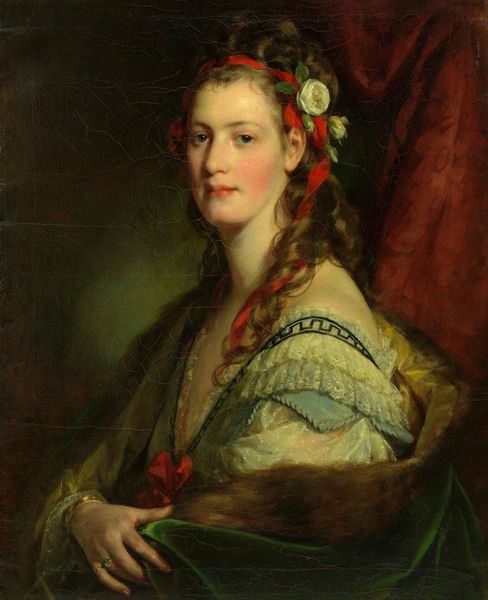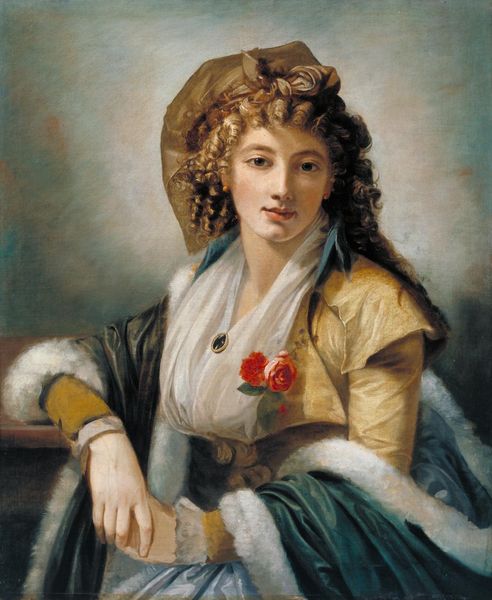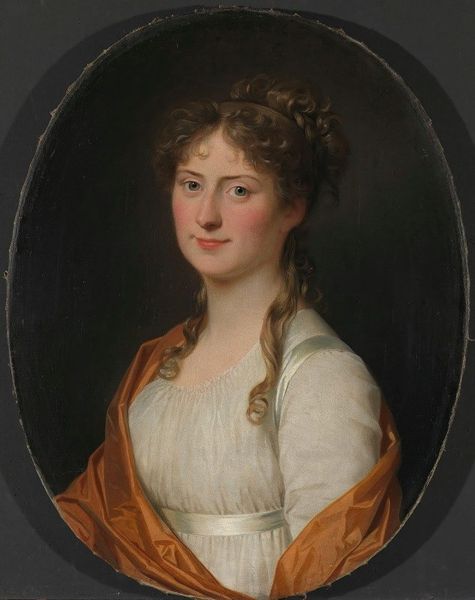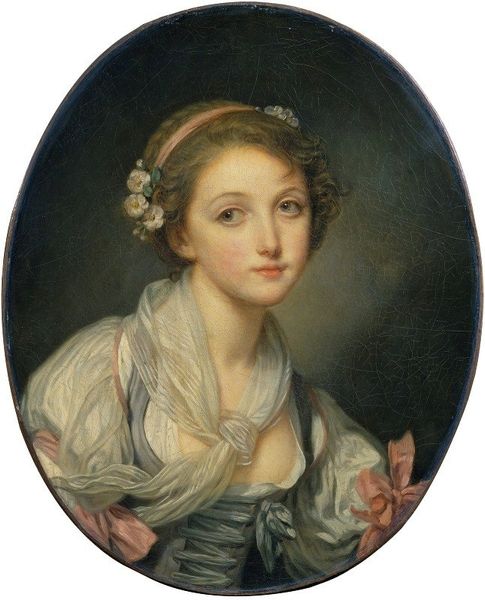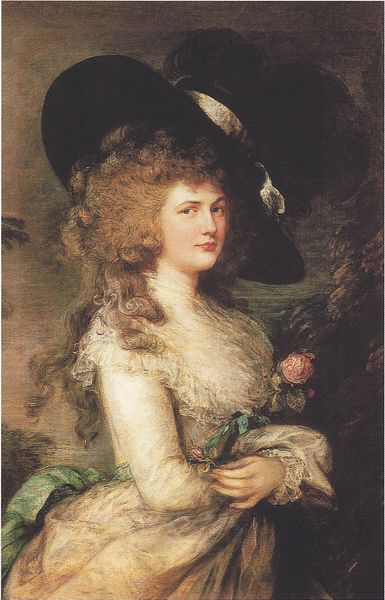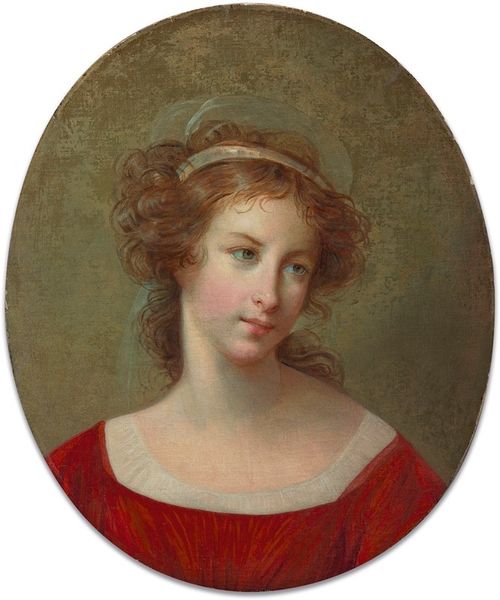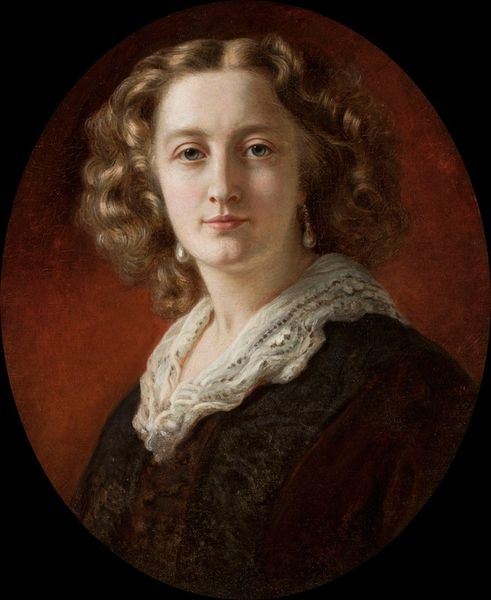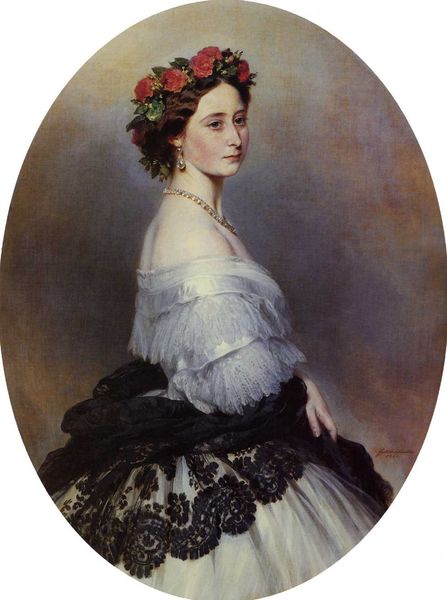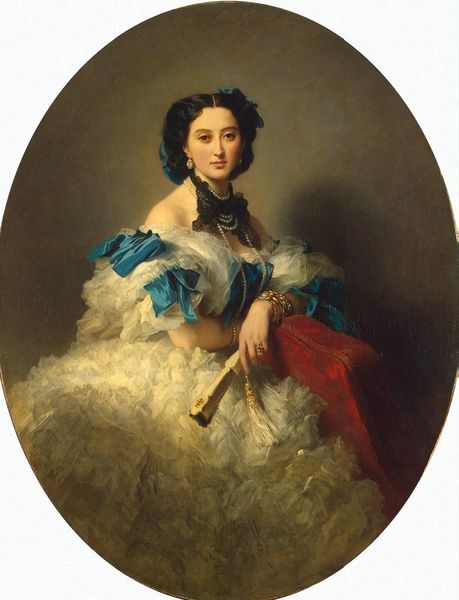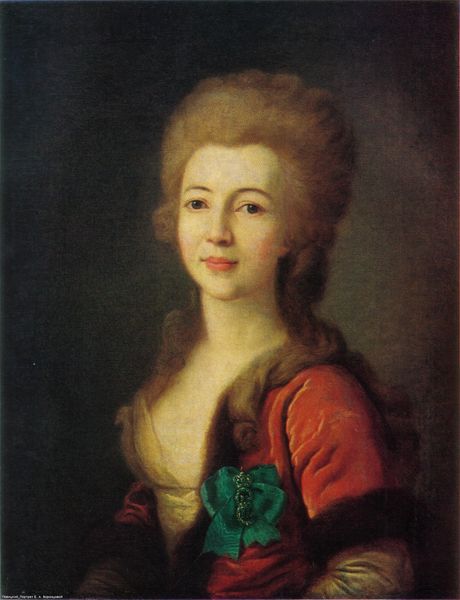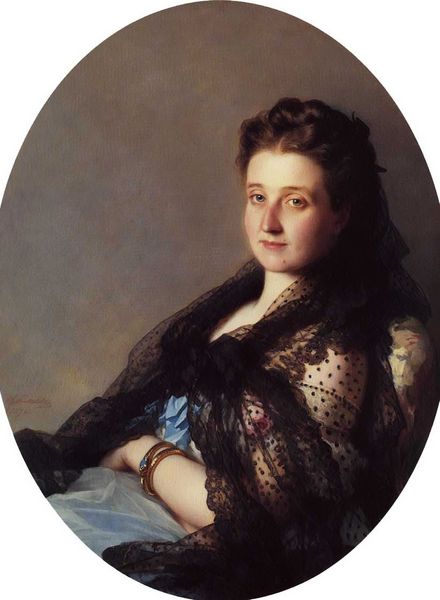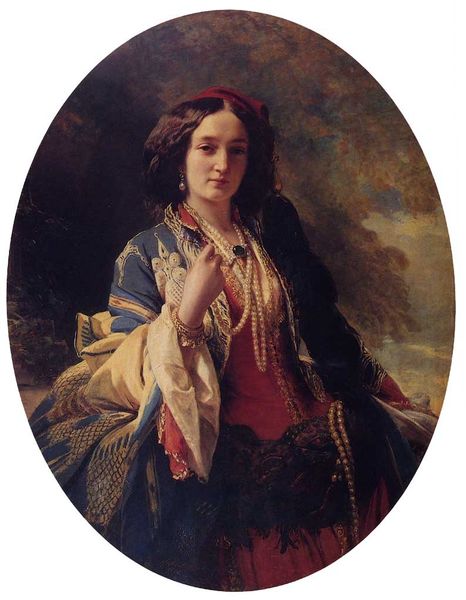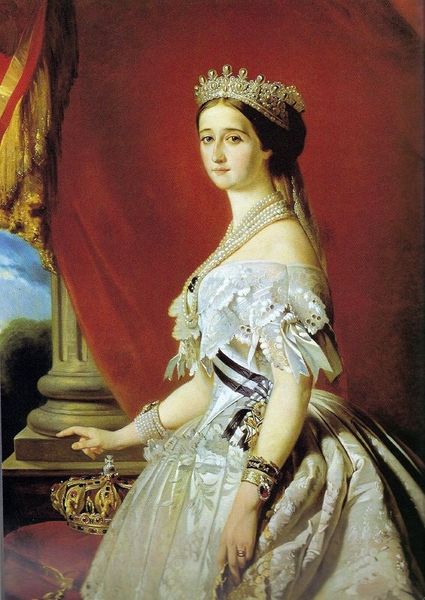
Copyright: Public domain
Franz Xaver Winterhalter painted this portrait of Zofia Potocka, Countess Zamoyska. Here, the rose is not merely a decorative element; it’s a loaded symbol. Roses have been associated with love, beauty, and secrecy across cultures for centuries. In ancient Rome, the rose was linked to Venus, the goddess of love, and used as a symbol of silence, ‘sub rosa’, meaning ‘under the rose’. Consider Botticelli’s "Birth of Venus," where roses fall around the goddess, echoing themes of love and divine beauty. The rose, in this context, transcends time, evolving from a symbol of secrecy in Rome to an emblem of romantic love and beauty in the Renaissance. Perhaps Winterhalter subconsciously tapped into the collective memory, using the rose to convey a sense of timeless beauty and perhaps, a hint of unspoken secrets surrounding Countess Zamoyska. This image engages us on an emotional level, hinting at deeper, perhaps hidden, aspects of her identity. The non-linear, cyclical progression of the rose resurfaces here, evolved with new meanings, yet still echoing its ancient origins.
Comments
No comments
Be the first to comment and join the conversation on the ultimate creative platform.
